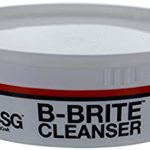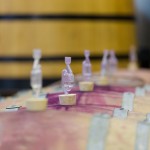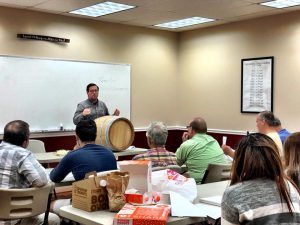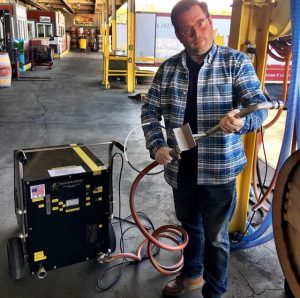Recent Posts
Archives
- October 2025
- August 2025
- June 2025
- March 2025
- February 2025
- November 2024
- September 2024
- August 2024
- April 2024
- March 2024
- January 2024
- December 2023
- November 2023
- October 2023
- September 2023
- August 2023
- July 2023
- June 2023
- May 2023
- April 2023
- March 2023
- February 2023
- September 2022
- August 2022
- April 2022
- March 2022
- December 2021
- November 2021
- October 2021
- September 2021
- August 2021
- July 2021
- June 2021
- May 2021
- April 2021
- March 2021
- February 2021
- October 2020
- September 2020
- August 2020
- July 2020
- June 2020
- May 2020
- April 2020
- March 2020
- February 2020
- January 2020
- December 2019
- November 2019
- October 2019
- September 2019
- August 2019
- July 2019
- April 2019
- March 2019
- February 2019
- January 2019
- December 2018
- November 2018
- October 2018
- September 2018
- August 2018
- July 2018
- June 2018
- May 2018
- April 2018
- March 2018
- February 2018
- January 2018
- November 2017
- October 2017
- September 2017
- August 2017
- July 2017
- June 2017
- May 2017
- April 2017
- March 2017
- February 2017
- January 2017
- December 2016
- November 2016
- October 2016
- September 2016
- August 2016
- July 2016
- June 2016
- May 2016
- April 2016
- March 2016
- February 2016
- January 2016
- September 2015
- August 2015
- April 2015
- February 2015
- January 2015
- December 2014
- November 2014
- September 2014
- July 2014
- June 2014
- March 2014
- June 2013
- July 2012
Categories
how to clean a wine barrel
Cleaning vs. Sanitizing in Winemaking
What is the difference between Cleaning vs. Sanitizing?
This is a discussion we have with customers constantly. Cleaning your equipment means that you have removed all of the visible dirt and residue on your equipment. Sanitizing means you have treated your equipment with a chemical solution that will eliminate, or prevent the growth of spoilage organisms. You MUST clean your equipment before sanitizing the equipment, since you cannot properly sanitize equipment with visible residue on it.
Below is a video from our online classes – WinemakingInstructions.com that talks about and shows you step by step how to clean and sanitize your equipment.
Interested in making your own wine? Musto Wine Grape Company is here to help! Musto’s New England’s largest supplier for home winemaking products and services. Visit juicegrape.com or give us a call at (877) 812 – 1137 to learn more.
Ozone – The New Industry Standard for Wine Barrel Care
Why Ozone your wine barrel?
As a winemaker you know that sanitization is a key factor in successful winemaking. The cleaner your cellar and winemaking practices, the better the wine. Ozone can help keep your wine barrel in the cleanest state that science will allow. Winemakers battle with high energy costs due to cleaning, hot water not fully blasting away harmful microbes, and the consistent cost of purchasing new oak barrels. Using Ozone will help retain oak character within your used barrels and extend their life in the cellar. Ozone treatments, paired with solid winemaking practices, will help create a consistent and microbe-resistant oak barrel – one that’s only infusions will be adding delicious oak characteristics and soft micro-oxidative qualities to your wines.
Ozone Facts:
- Ozone is a stand-alone organic sanitizer which simplifies sanitation, is safe to use, saves water and energy, and is environmentally friendly.
- Ozone is produced as needed on site, dissipates after use and minimizes the purchase, storage, mixing and disposal of chemicals.
- Ozone is a cold sanitizer which saves energy and extends barrel flavors
- Ozone kills a much broader spectrum bacteria, fungus and molds, yeasts, spores and cysts Organisms Killed by Ozone from 10 to 5000 times faster than halogenated chemicals (chorine, iodine, etc.).
- Ozone was approved by a FDA Expert Panel as GRAS (generally recognized as safe) for use as a sanitizer in 1997 and was approved by FDA for use with fruits, vegetables, meat, poultry, etc. in June 2001 (food additive petition).
- Ozone was approved under USDA Organic Rule in 2000.
- Ozone reverts to molecular oxygen, leaving no by-products or residual contaminants.
- Ozone unlike halogenated chemicals (i.e. chlorine, iodine, etc.) ozone does not generate TCA precursors or dangerous halogenated hydrocarbon byproducts, such as THM’s.
- Ozone destroys objectionable taste and odor causing compounds.
- Ozone is pH neutral, (does not change the acid/alkaline balance).
Musto Wine Grape Company, LLC. uses ozone protocols to eliminate and prevent the return of microbial spoilage organisms (i.e. Brettanomyces, Acetobacter, malolactic and lactobacillus, etc.) in barrels. No rinsing after the sanitation is required which reduces sanitation times and water usage.
We use gaseous ozone to maintain barrel and wooden upright health during storage eliminating the use of sulfur and sulfur dioxide. Every used barrel that is delivered to MWG is ozoned before it reaches any perspective customers.
Ozone has become a single source organic sanitizer at Musto Wine Grape Company, LLC.. Its use allows us to produce a better product through the control of spoilage organisms, mold, and mildew in our used barrels for our customers. We hope you attend our upcoming Barrel Care Class and see how Ozone (in addition to other barrel care and maintenance techniques) can help you maintain and increase your wine’s quality. All class attendees will be able to bring in their own barrel and we will treat it with ozone after the class at no charge.
FREE Barrel Care Class – March 9th at 10:00AM
Join us Saturday March 9th at 10:00AM for our FREE Barrel Care Class taught by our resident equipment expert Patrick Milio. Patrick will go over Barrel Care, Barrel Maintenance, and Barrel Aging.
Also, if you bring your barrel to class we will Ozone it for FREE (limit 1 barrel per person)!
We look forward to seeing you in class.
Please RSVP to cmusto@juicegrape.com to secure your spot in class.
Why Ozone your barrel?
Ozone makes your barrel the cleanest state that science will allow.
Using Ozone will also help retain oak character within the barrels and make them easier to swell.
Archives
- October 2025
- August 2025
- June 2025
- March 2025
- February 2025
- November 2024
- September 2024
- August 2024
- April 2024
- March 2024
- January 2024
- December 2023
- November 2023
- October 2023
- September 2023
- August 2023
- July 2023
- June 2023
- May 2023
- April 2023
- March 2023
- February 2023
- September 2022
- August 2022
- April 2022
- March 2022
- December 2021
- November 2021
- October 2021
- September 2021
- August 2021
- July 2021
- June 2021
- May 2021
- April 2021
- March 2021
- February 2021
- October 2020
- September 2020
- August 2020
- July 2020
- June 2020
- May 2020
- April 2020
- March 2020
- February 2020
- January 2020
- December 2019
- November 2019
- October 2019
- September 2019
- August 2019
- July 2019
- April 2019
- March 2019
- February 2019
- January 2019
- December 2018
- November 2018
- October 2018
- September 2018
- August 2018
- July 2018
- June 2018
- May 2018
- April 2018
- March 2018
- February 2018
- January 2018
- November 2017
- October 2017
- September 2017
- August 2017
- July 2017
- June 2017
- May 2017
- April 2017
- March 2017
- February 2017
- January 2017
- December 2016
- November 2016
- October 2016
- September 2016
- August 2016
- July 2016
- June 2016
- May 2016
- April 2016
- March 2016
- February 2016
- January 2016
- September 2015
- August 2015
- April 2015
- February 2015
- January 2015
- December 2014
- November 2014
- September 2014
- July 2014
- June 2014
- March 2014
- June 2013
- July 2012











Recent Comments